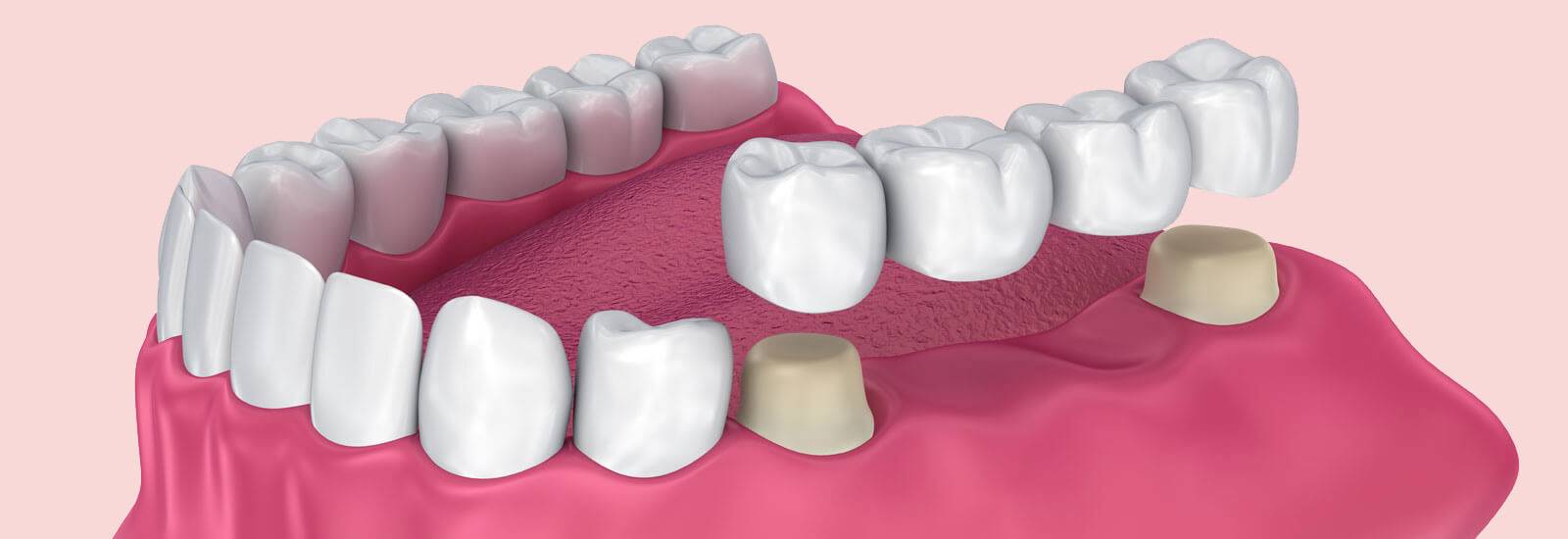Dental Bridge Cost & Treatment in Thane
A falling of the natural teeth or removal of teeth creates a gap between the teeth set. This gap creates problems while chewing the food and smiling. Dental bridge treatment is a proper solution for these missing teeth. In Thane, you can visit any nearest Sabka dentist branch to get the dental bridge done at a very convenient cost.

Talk to a Dentist Now!
Table of content
What is a dental bridge?
A dental bridge, is a fixed prosthesis, designed to replace one or more missing teeth. Bridges can be supported in any of three ways:
- By natural teeth
- By implants
- By a combination of teeth and implants
Gaps formed by missing teeth eventually lead the adjacent teeth to shift into the empty space resulting in a bad bite. The imbalance caused by missing teeth can eventually lead to gum disease and temporomandibular joint disorders.

A traditional bridge is a fixed prosthetic devices that are cemented onto existing teeth or implants. The natural teeth or implants that give anchor to the bridge are called abutments. The artificial tooth/teeth that replaces a missing natural tooth/teeth is called pontic. A three unit bridge is composed of:
- Retainer: A crown i.e. used as part of fixed partial denture for retention and support from abutment tooth.
- Abutment: It is any tooth, or implant, which gives attachment and support to fixed partial denture.
- Pontic: Pontic is the artificial tooth that replaces a missing tooth in a fixed partial denture.
If the teeth receiving the crowns are healthy and strong, they probably will not need root canal therapy. However, tooth preparation will be done to make space for the crowns. Traditional bridges are made either of porcelain fused to metal (PFM) or ceramics.
There are other types of bridges as well. A cantilever bridge is held in the mouth by one or more crowns on only one side of the space where a tooth is missing. A Maryland bonded bridge consists of a metal framework with “wings” on each side. The wings are bonded to the back of your existing teeth. The false teeth are also bonded to the framework. This type of bridge is also called a resin-bonded bridge or an acid-etched bridge.
Bonded bridges usually are not as expensive as traditional bridges. That’s because the adjacent teeth need less preparation and do not get crowns. However, these bridges are only as strong as the bonding material.

Resin-bonded bridges tend not to stay cemented in place as well as other kinds in parts of the mouth where there is a lot of biting force. They also may not be the best choice if the wings will have to be small to avoid getting in the way of the bite or the gums.
Getting a bridge requires at least two visits, but often more. At the first visit, your dentist prepares the teeth and covers them with temporary crowns. The dentist may also make impressions of the teeth.
About Author

Dr. Reena is a graduate of Maharashtra University of Health Sciences with a Bachelor in Dental Surgery. Dr. Reena Waghela is a leading dental surgeon having over twelve years of experience, with a special focus on advanced dental care. She is trained in Implant Dentistry, Aesthetics, and Full Mouth Rehabilitation. She picked up the finer nuances of Dental Practice Management while assisting leading dental surgeons during her time in the USA.



